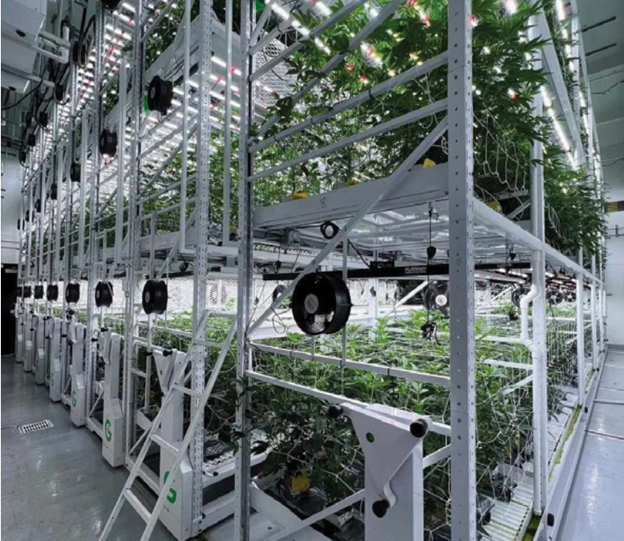Cannabis cultivated indoors has a larger carbon footprint than cannabis grown under the sun. That is no secret. However, that is not to say cannabis should only be cultivated outdoors.
Some jurisdictions prohibit outdoor cultivation for security reasons and in certain regions of the world cultivating quality cannabis outdoors is simply not a viable option.
Sungrown cannabis does not always result in a lower carbon footprint when additional factors are considered. Shipping a harvest to another jurisdiction, especially internationally, clearly adds to the overall carbon footprint. In some cases, domestic indoor cultivation makes more sense than shipping internationally.
Maximizing Indoor Cultivation Space Is Important
For cultivators to reduce their carbon footprint as much as possible, they must maximize every inch of their facility space. It’s an important part of facility design strategy, both for spaces where plants will be housed or stored and spaces where other processes will be conducted.
Cultivators must think vertically, not just horizontally. To maximize space, operators need to incorporate multiple layers into their cultivation operations by using rack systems. Grow Glide is one company specializing in vertical growing solutions. Grow Glide CEO and co-founder Travis Schwartz said vertical racking maximizes cultivation space, reducing both the physical and the carbon footprint of the grow facility.
“Grow Glide’s unique ability to maximize cultivation space down to the inch is better for the environment and better for the bottom line. Wasted space is wasted money and wasted resources,” Schwartz said.
Careful planning and design strategy are crucial for growers entering the space or scaling their operations. “Vertical indoor farming is not a simple solution, cultivators need to take time to carefully plan out their operations well in advance of opening their doors and consider the entire picture,” Schwartz advised.
As international markets open to cannabis cultivation, particularly those regions with harsh winters, shorter growing seasons, or challenging environmental conditions, indoor facilities must be constructed to have the most efficient use of resources possible.
“The right mix of forethought and execution can drive ROI and minimize envirnomental impacts,”
Schwartz said. “Ultimately, cultivators have a responsibility to protect the planet by growing healthy plants and maximizing yields.”
Boosting Return on Investment
Cannabis businesses are no different from other businesses when it comes to boosting a return on investment. As Schwartz mentioned, facility racks help boost a company’s return on investment by amplifying output and reducing operating costs.
Depending on how a company’s current facility is designed, they could build vertically and double their current output while using the same building. Such engineering would maintain the same costs for rent and many utilities while increasing output.
Demand for legal cannabis will continue to grow in jurisdictions where the cannabis industry is allowed to operate. To meet that demand in a way that is sustainable and profitable, it is vital indoor cultivators maximize grow space in addition to using best practices in sustainability. ϖ
SPRING ISSUE






